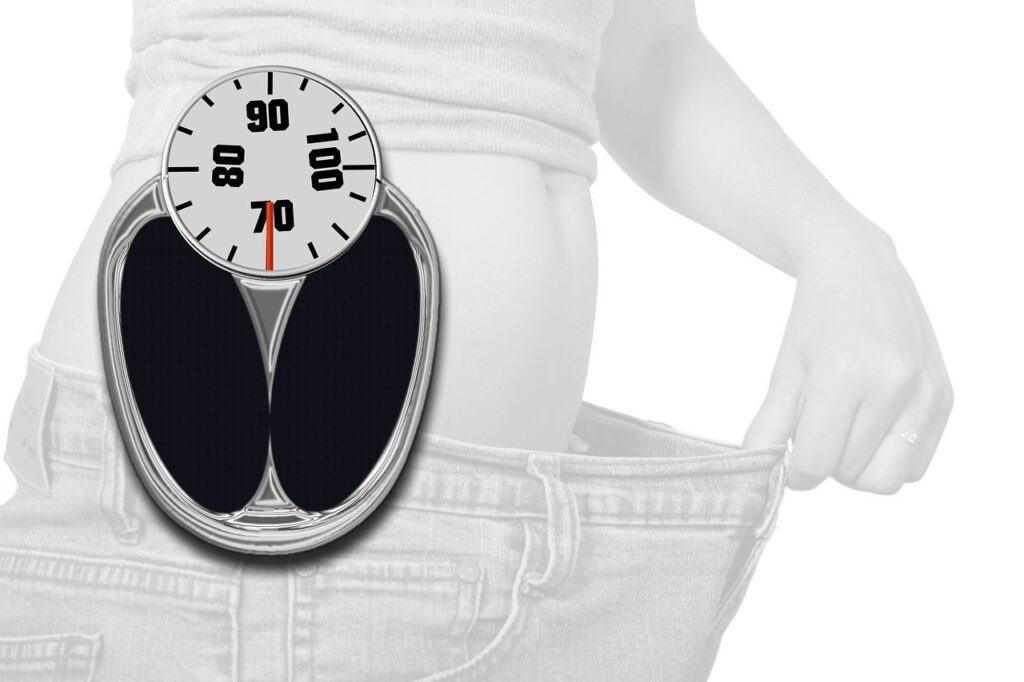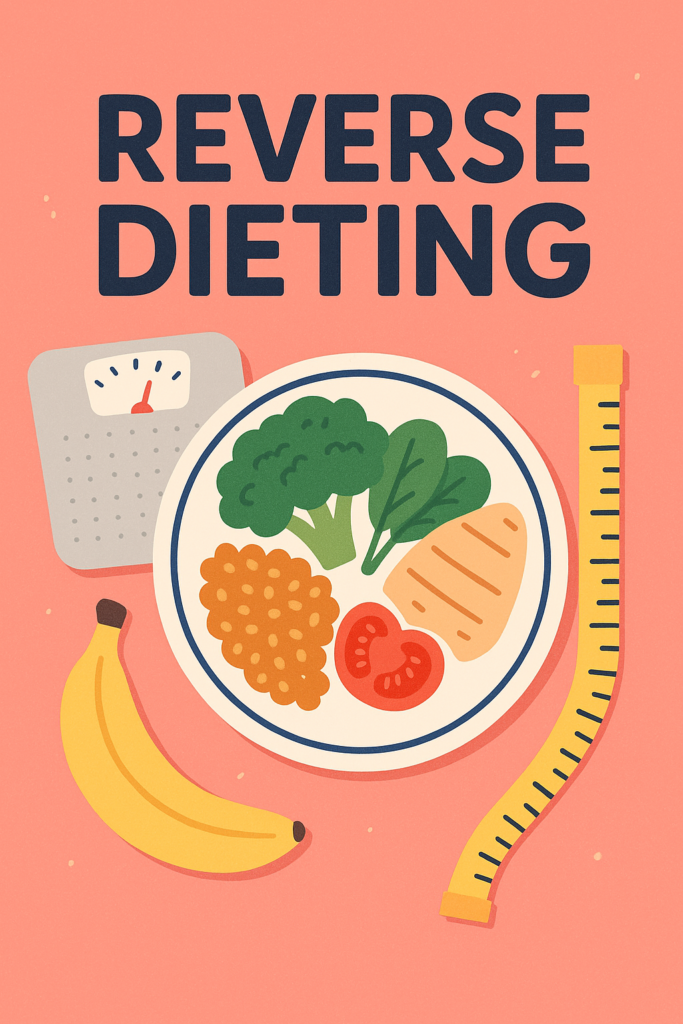At askdoctor.ai, you will get complete knowledge about broken metabolism. If you`re feeling stuck in your weight loss journey like your body just isn’t responding anymore? You’re not broken — and neither is your metabolism. There’s a smarter, more empowering way forward. In this guide, we’ll introduce you to reverse dieting — a proven strategy to gently rebuild your metabolism, boost your energy, and restore your confidence. Whether you’ve hit a plateau or feel burnt out from chronic dieting, this is your roadmap to healing, strength, and sustainable results. You’ve got this — and we’ll show you how.
The Secret to a Stronger Metabolism: What You Need to Know About Reverse Dieting
If you’ve been cutting calories, hitting the gym, and still not seeing results, you might be wondering: “Is my metabolism broken?” You’re not alone. Many people feel stuck in a cycle of dieting and fatigue, only to watch the scale refuse to budge. But the truth is, your metabolism isn’t broken — it’s adaptive. And with the right strategy, you can restore it. This is where reverse dieting comes in.
In this article, we’ll break down what reverse dieting is, how it works, and how it could be the key to helping you regain control of your body, your mindset, and your results.
What Is Reverse Dieting: How it Works?
Reverse dieting is a nutritional strategy that involves gradually increasing calorie intake after a period of caloric restriction. The goal is to restore metabolic rate, balance hunger hormones, and prevent rapid weight regain. This approach is commonly used by athletes and bodybuilders transitioning from a calorie deficit to maintenance levels, but it can also benefit individuals experiencing weight loss plateaus or metabolic slowdown.
How Does Reverse Dieting Work?
During prolonged calorie restriction, the body adapts by reducing its resting metabolic rate (RMR) to conserve energy—a phenomenon known as adaptive thermogenesis. This adaptation can make further weight loss challenging and increase the likelihood of weight regain once normal eating resumes.
Reverse dieting aims to counteract this by slowly increasing daily caloric intake, typically by 50–100 calories per week, over several weeks. This gradual increase allows the metabolism to adjust upward, helping to stabilize weight and energy levels. Maintaining consistent protein intake during this process supports muscle mass, which is crucial for a healthy metabolism.
Potential Benefits of Reverse Dieting
- Metabolic Restoration: Gradually increasing calories can help elevate the resting metabolic rate, making it easier to maintain weight loss.
- Hormonal Balance: Reverse dieting may normalize levels of hormones like leptin and ghrelin, which regulate hunger and satiety.
- Improved Energy Levels: As caloric intake increases, individuals often experience enhanced energy, better workout performance, and improved mood.
- Sustainable Eating Habits: This method encourages a structured transition to maintenance eating, potentially reducing the risk of binge eating or rapid weight regain.
Signs Your Metabolism May Be “Downregulated”
If you’ve been dieting for a long time or eating too few calories, your metabolism might have adapted by slowing down — a process often referred to as metabolic downregulation. This isn’t a sign that your body is broken; it’s your body’s way of conserving energy for survival. But it can make fat loss harder and impact your overall well-being.
Here are some common signs your metabolism may be downregulated:
- Persistent fatigue or low energy, even with enough sleep
- Difficulty losing weight despite eating less and exercising more
- Constant hunger or, in contrast, a suppressed appetite
- Feeling cold frequently, especially in hands and feet
- Hair thinning or brittle nails
- Irregular or lost menstrual cycles (for women)
- Mood swings, irritability, or low motivation
- Digestive issues like bloating or constipation
- Sleep disturbances or waking up unrefreshed
- Decreased strength or performance in the gym

How to Start Reverse Dieting
Understand What Reverse Dieting Is
- Gradual increase in calories after a period of dieting
- Goal: restore metabolism, prevent fat gain, improve energy & mood
Know If It’s Right for You
- You’ve been in a calorie deficit for a while
- Experiencing fatigue, stalled weight loss, or poor gym performance
- You want to transition to maintenance without regaining fat
Determine Your Current Maintenance Calories
- Track your intake and weight for 1–2 weeks
- If your weight is stable, you’re likely at maintenance
Start Increasing Calories Slowly
- Add 50–150 calories per week (mostly from carbs/fats)
- Focus on slow, steady increases to allow your metabolism to adjust
Monitor Biofeedback and Progress
- Track weight, energy levels, hunger, sleep, and mood
- Slight weight gain is normal; large jumps mean you’re adding too quickly
Prioritize Protein and Strength Training
- Keep protein high (0.8–1g per lb of body weight)
- Continue resistance training to build/maintain muscle
Be Patient
- Reverse dieting can take 6–12+ weeks
- The goal is sustainability, not rapid changes
Adjust Based on Results
- If weight is stable or dropping, increase more
- If weight jumps quickly, pause or reduce the increase
The Long-Term Benefits of Reverse Dieting
When you take the time to rebuild your metabolism, you gain so much more than just a higher calorie ceiling. You gain:
- More freedom with food
- Better performance in workouts
- Stable energy and mood
- Less obsession and burnout
- A stronger foundation for fat loss, muscle gain, or maintenance
Reverse dieting isn’t the end of your journey — it’s the beginning of a healthier, more sustainable one.

Pros and Cons of Reverse Dieting
Pros of Reverse Dieting
- Metabolic Recovery: Gradually increasing calories may help restore the metabolic rate suppressed during prolonged dieting.
- Muscle Preservation: A slower transition can help retain lean muscle mass and support strength training progress.
- Reduced Fat Regain: Controlled calorie increases may reduce the likelihood of rapid fat rebound often seen after crash diets.
- Hormonal Balance: Helps normalize hormones like leptin, ghrelin, and thyroid hormones affected by calorie restriction.
- Sustainable Eating Habits: Encourages mindful tracking and long-term nutritional awareness.
- Fewer Binge Episodes: May reduce the psychological urge to binge after a strict diet, easing the transition back to maintenance.
- Performance Boost: Athletes and active individuals often report better energy, training performance, and recovery.
Cons of Reverse Dieting
- Time-Consuming: Results take time; requires patience and consistent tracking.
- Limited Research: Few large-scale scientific studies validate its long-term effectiveness.
- Mentally Demanding: Constant monitoring of food intake and small calorie increases can feel tedious or obsessive for some.
- Weight Fluctuation: Minor weight gain is expected, which may cause anxiety for those sensitive to scale changes.
- Not a One-Size-Fits-All: Individuals with disordered eating histories may need professional guidance before attempting this strategy.
- Requires Structure: Meal planning and calorie counting tools (apps, food scales) may be necessary for accuracy.
Final Thoughts about Reverse Dieting
Your metabolism isn’t broken — it’s adaptive. And with the right tools and patience, you can guide it toward healing and strength. Reverse dieting is not a fad; it’s a science-based strategy that puts you back in control. Whether you’re looking to boost your energy, break through a plateau, or stop fearing food, this method can help you rise, recover, and thrive.
Ready to stop the cycle and start feeling strong again? Reverse dieting could be the reset your body has been waiting for.
Real-Life Success Stories of Reverse Dieting
After years of yo-yo dieting and struggling with cycles of restriction and binging, this 35-year-old woman decided it was time for a new approach. Despite consistent workouts, healthy eating, and tracking her calories, she found herself gaining weight instead of losing it—likely due to a slowed metabolism from years of undereating.
Instead of repeating the same pattern, she chose a smarter path: reverse dieting. She’s now focused on rebuilding her metabolism by gradually increasing her calories from 1700 to around 2100 while keeping her protein high. She’s also following a structured workout program she loves—Heather Robertson’s HR12Week 2.0—and intentionally reducing her daily steps from an unsustainably high 12k to a more balanced 6–7k.
Her mindset shift is the true victory: this time, it’s not about quick fixes but long-term metabolic health, sustainable habits, and possibly even body re-composition. She’s doing it right, giving her body the fuel it needs to thrive—and refusing to waste another year stuck in the same cycle.
Jaime`s Reverse Diet Success Story
Restoring the metabolism for successful fat loss often means putting off weight loss for a long time. Jaime had a different response and started losing once she was able to train, eat, and get into a consistent mode. Adding calories for months we kept losing body fat as well. This is her more than 2 year journey.
Reverse diet success story with Sara
References:
Healthline about Reverse Dieting
National Institute of Medicine
Reddit Story






Leave a Reply